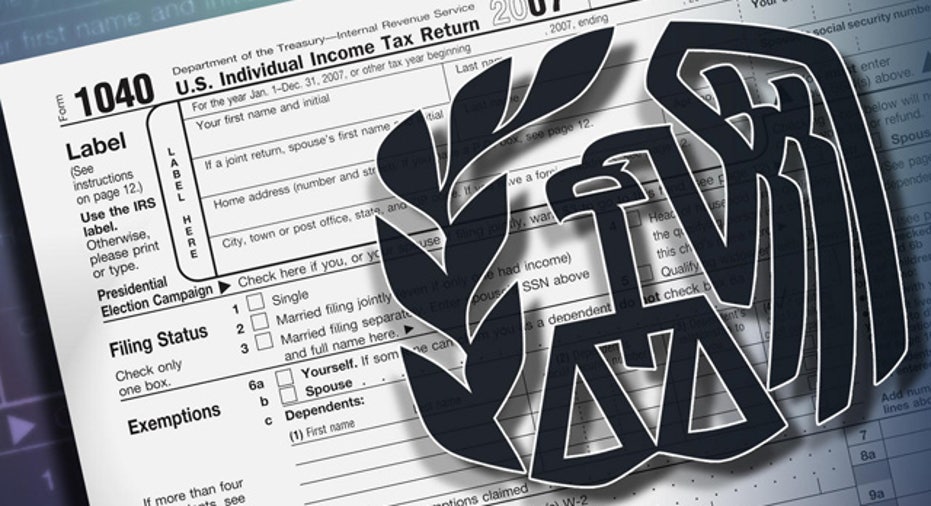More Tips to Avoid Obamacare’s 3.8% Surtax

“It’s a tax that punishes people that have been diligent over the years and did the right thing,” says Certified Public Accountant Bob Keebler on the Medicare surtax that kicks in on Jan.1.
As I wrote last week, the additional 3.8% tax is part of the president's Patient Protection and Affordable Care Act, ak.a. “Obamacare,” and affects individuals Congress has decided are “wealthy:” single taxpayers with modified adjusted gross income (MAGI) of $200,000 or more and married couples with a MAGI of at least $250,000.
If you fall into one of these categories, you’ll pay 3.8% more in federal income tax on the lesser of your investment income or your “excess” MAGI- the amount that exceeds the $200,000 or $250,000 threshold.
“Congress has introduced a third dimension- this surtax- that will affect every investment decision and transaction you make,” warns Keebler, who holds a Master of Science degree in taxation and addresses tax professionals around the country.
If you’ve got two or three children, $250,000 is a relatively modest income in areas of the country where the cost of living is especially high. Nonetheless, couples with two working spouses are vulnerable to the surtax. (Note that if they were not married, their household income could be $400,000 before the surtax kicked in!)
Retirees could be surprised to find that they are victims of the surtax if, as Keebler puts it, they “did the right thing”and worked hard, lived modestly and invested wisely so that they wouldn’t be a burden on their kids or society when they left the workforce. Here's the problem: If the decide to sell the home they’ve lived in for 35 years when they retire, thanks to the surtax, they could lose some of the profit they make because it’s considered a “capital gain,” that is, investment income.
Although income received from a pension, traditional IRA or company-sponsored retirement plan is not subject to the additional tax, it can push your other income above the threshold, exposing it to the surtax. This is referred to as the “bubble” effect. Here’s how it works:
Fred and Wilma are in their mid-60s and semi-retired. Wilma is a freelance writer, earning $20,000 per year. Fred worked part-time job at the hardware store and earned $17,000. Their CDs and mutual funds generated $45,000 in income. Each receives pension income, for a total of $120,000. They withdrew $80,000 from Fred’s traditional IRA to buy a new car and a time-share unit so they could escape the Massachusetts winters. Here’s what Wilma and Fred’s taxable income looks like:
Although their pension income and IRA withdrawal are not, themselves, subject to the surtax, they form a $200,000 “bubble” that causes Fred and Wilma’s other income to rise above the $250,000 threshold.(1)
Is there something Fred and Wilma could have done to avoid the surtax? Definitely! Although you need to consider whether this would push you into a higher bracket, converting some of the assets in a traditional IRA to a Roth IRA is one strategy. That’s because withdrawals from a Roth IRA are not subject to federal income tax. Here’s how and $80,000 withdrawal from a Roth IRA would change the situation for Fred and Wilma:
According to Keebler, “If some of your modified adjusted gross income will be subject to the surtax, a Roth conversion can only help you.” Furthermore, he adds, “If you are in the highest tax bracket already, it’s a no brainer.” When the top two tax brackets increase next year, the cost to convert will be higher.
Municipal bonds are another option since, like Roth accounts, they also offer income that is not subject to federal income tax.
Tax-favored investment vehicles such as annuities are something pre-retirees might want to consider, says Keebler. “If you’re working and subject to the surtax, invest the low-risk portion of your portfolio in a fixed annuity.” Since the interest you earn is sheltered from federal tax until you take it out, you want to wait until after you retire to start withdrawals. By then, your income will have dropped below the surtax threshold.
This is what’s termed a “leap-frog annuity” because, as Keebler explains, “you’re leaping over your wage years.”
“Life insurance will have a renaissance,” predicts Keebler. “All of the growth will be tax-free if [your policy] is designed correctly.” Income earned inside your account avoids tax until you withdraw it. As long as total withdrawals don’t exceed your original investment, they’re considered a tax-free return of principal.
If you think next year’s income will potentially be high enough to subject you to the surtax, you need to start adjusting your portfolio and income sources today. This is especially true for trusts. Keebler cautions that it’s critical to find a tax expert who really understands this topic.
1. The 3.8% surtax is applied to the $32,000 because this is less than the $45,000 in investment income that Fred and Wilma received.
Ms. Buckner is a Retirement and Financial Planning Specialist and an instructor in Franklin Templeton Investments' global Academy. The views expressed in this article are only those of Ms. Buckner or the individual commentator identified therein, and are not necessarily the views of Franklin Templeton Investments, which has not reviewed, and is not responsible for, the content.
If you have a question for Gail Buckner and the Your $ Matters column, send them to: yourmoneymatters@gmail.com, along with your name and phone number.